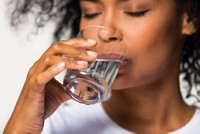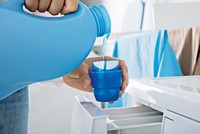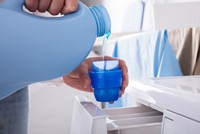Advertisement
Grab your lab coat. Let's get started
Welcome!
Welcome!
Create an account below to get 6 C&EN articles per month, receive newsletters and more - all free.
It seems this is your first time logging in online. Please enter the following information to continue.
As an ACS member you automatically get access to this site. All we need is few more details to create your reading experience.
Not you? Sign in with a different account.
Not you? Sign in with a different account.
ERROR 1
ERROR 1
ERROR 2
ERROR 2
ERROR 2
ERROR 2
ERROR 2
Password and Confirm password must match.
If you have an ACS member number, please enter it here so we can link this account to your membership. (optional)
ERROR 2
ACS values your privacy. By submitting your information, you are gaining access to C&EN and subscribing to our weekly newsletter. We use the information you provide to make your reading experience better, and we will never sell your data to third party members.
Persistent Pollutants
New York restricts 1,4-dioxane in cleaning and personal care products
State is first in US to limit level of this persistent pollutant in consumer goods
by Cheryl Hogue
December 13, 2019

New York is banning the sale of household cleaning and personal care products containing more than 2 ppm of 1,4-dioxane at the end of 2022. The state is the first in the US to set a maximum contaminant limit in products for 1,4-dioxane, which the US Environmental Protection Agency says is a likely human carcinogen and does not readily biodegrade in the environment.

The law, signed by Gov. Andrew M. Cuomo on Dec. 9, further tightens the limit to 1 ppm on Dec. 31, 2023. The law also prevents the sale in New York of cosmetics with more than 10 ppm of 1,4-dioxane as of the end of 2022.
The American Cleaning Institute, which represents producers of soaps and detergents, says the law is “ill advised” and could halt the sales of many common household products in New York.
The industry group says “minuscule amounts” of 1,4-dioxane can end up in some laundry and dish detergents. The chemical is
The advocacy group Citizen Campaign for the Environment has tested shampoos, body washes, baby products, laundry detergents, and hand and dish soaps for the presence of 1,4-dioxane and posted the results online.
Elevated levels of 1,4-dioxane, formerly used as a stabilizer in chlorinated solvents, primarily 1,1,1-trichloroethane, have been detected in drinking water across New York. Data show that Long Island has one of the highest levels found in the US, with contamination there stemming primarily from industrial operations, according to local officials.
The cleaning institute says the new law “will have no measurable impact on groundwater, and it will not have the intended effect for Long Island’s residents.”
There are no federal standards for 1,4-dioxane in drinking water, though the EPA has estimated there is a one-in-a-million lifetime cancer risk from drinking water with 0.35 ppb of the substance. The agency is evaluating the risks of 1,4-dioxane under the federal Toxic Substances Control Act. External science advisers recently took the agency to task for failing to consider exposure to consumers and the general population in that work.







Join the conversation
Contact the reporter
Submit a Letter to the Editor for publication
Engage with us on Twitter